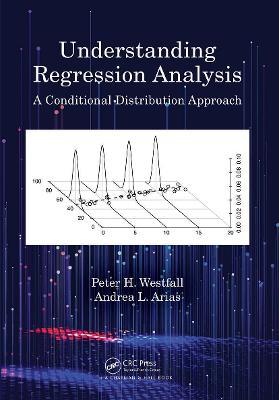Understanding Regression Analysis: A Conditional Distribution Approach

Understanding Regression Analysis: A Conditional Distribution Approach
Understanding Regression Analysis unifies diverse regression applications including the classical model, ANOVA models, generalized models including Poisson, Negative binomial, logistic, and survival, neural networks, and decision trees under a common umbrella -- namely, the conditional distribution model. It explains why the conditional distribution model is the correct model, and it also explains (proves) why the assumptions of the classical regression model are wrong. Unlike other regression books, this one from the outset takes a realistic approach that all models are just approximations. Hence, the emphasis is to model Nature's processes realistically, rather than to assume (incorrectly) that Nature works in particular, constrained ways.
Key features of the book include:
- Numerous worked examples using the R software
- Key points and self-study questions displayed just-in-time within chapters
- Simple mathematical explanations (baby proofs) of key concepts
- Clear explanations and applications of statistical significance (p-values), incorporating the American Statistical Association guidelines
- Use of data-generating process terminology rather than population
- Random-X framework is assumed throughout (the fixed-X case is presented as a special case of the random-X case)
- Clear explanations of probabilistic modelling, including likelihood-based methods
- Use of simulations throughout to explain concepts and to perform data analyses
This book has a strong orientation towards science in general, as well as chapter-review and self-study questions, so it can be used as a textbook for research-oriented students in the social, biological and medical, and physical and engineering sciences. As well, its mathematical emphasis makes it ideal for a text in mathematics and statistics courses. With its numerous worked examples, it is also ideally suited to be a reference book for all scientists.
PRP: 412.70 Lei
Acesta este Prețul Recomandat de Producător. Prețul de vânzare al produsului este afișat mai jos.
330.16Lei
330.16Lei
412.70 LeiLivrare in 2-4 saptamani
Descrierea produsului
Understanding Regression Analysis unifies diverse regression applications including the classical model, ANOVA models, generalized models including Poisson, Negative binomial, logistic, and survival, neural networks, and decision trees under a common umbrella -- namely, the conditional distribution model. It explains why the conditional distribution model is the correct model, and it also explains (proves) why the assumptions of the classical regression model are wrong. Unlike other regression books, this one from the outset takes a realistic approach that all models are just approximations. Hence, the emphasis is to model Nature's processes realistically, rather than to assume (incorrectly) that Nature works in particular, constrained ways.
Key features of the book include:
- Numerous worked examples using the R software
- Key points and self-study questions displayed just-in-time within chapters
- Simple mathematical explanations (baby proofs) of key concepts
- Clear explanations and applications of statistical significance (p-values), incorporating the American Statistical Association guidelines
- Use of data-generating process terminology rather than population
- Random-X framework is assumed throughout (the fixed-X case is presented as a special case of the random-X case)
- Clear explanations of probabilistic modelling, including likelihood-based methods
- Use of simulations throughout to explain concepts and to perform data analyses
This book has a strong orientation towards science in general, as well as chapter-review and self-study questions, so it can be used as a textbook for research-oriented students in the social, biological and medical, and physical and engineering sciences. As well, its mathematical emphasis makes it ideal for a text in mathematics and statistics courses. With its numerous worked examples, it is also ideally suited to be a reference book for all scientists.
Detaliile produsului









